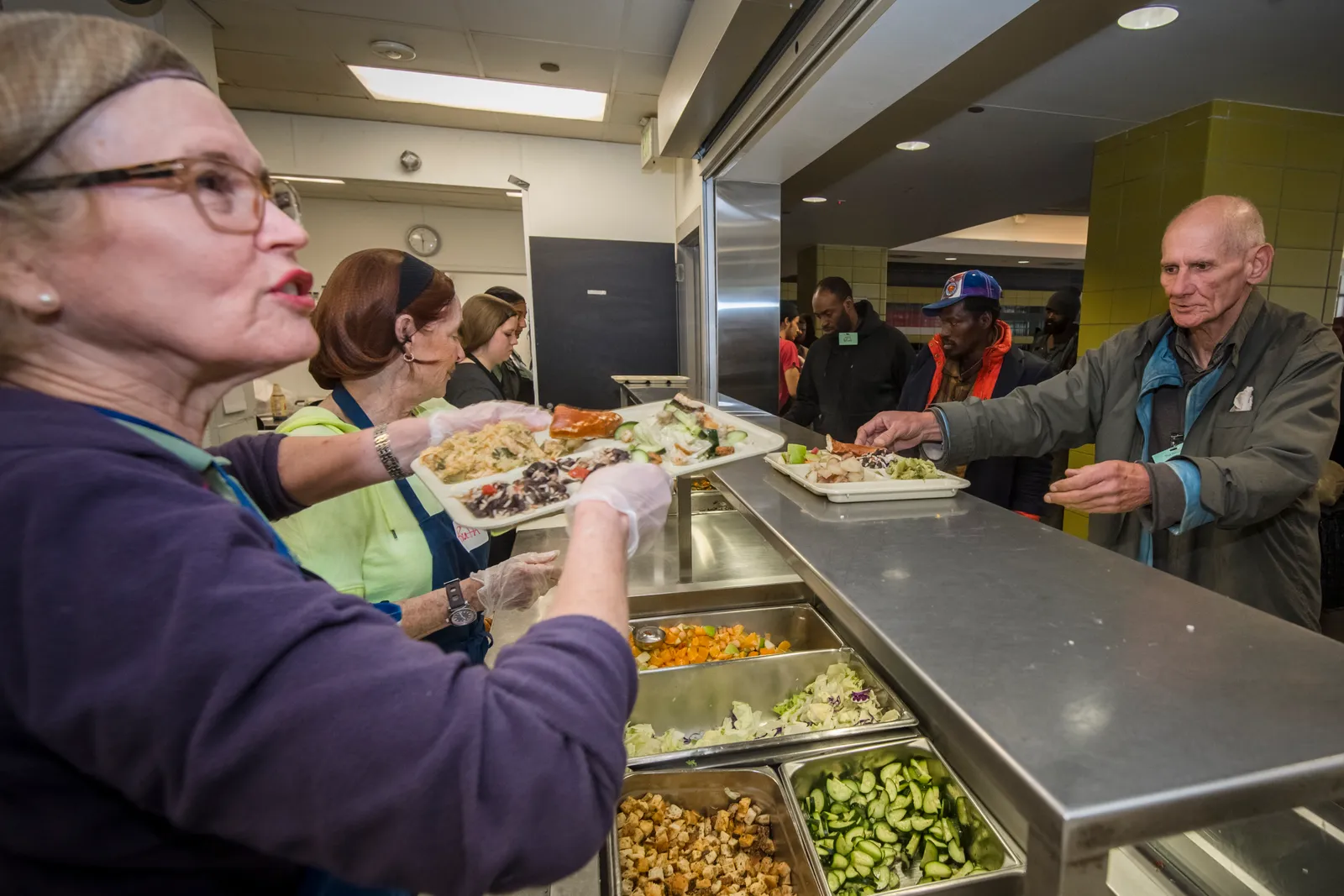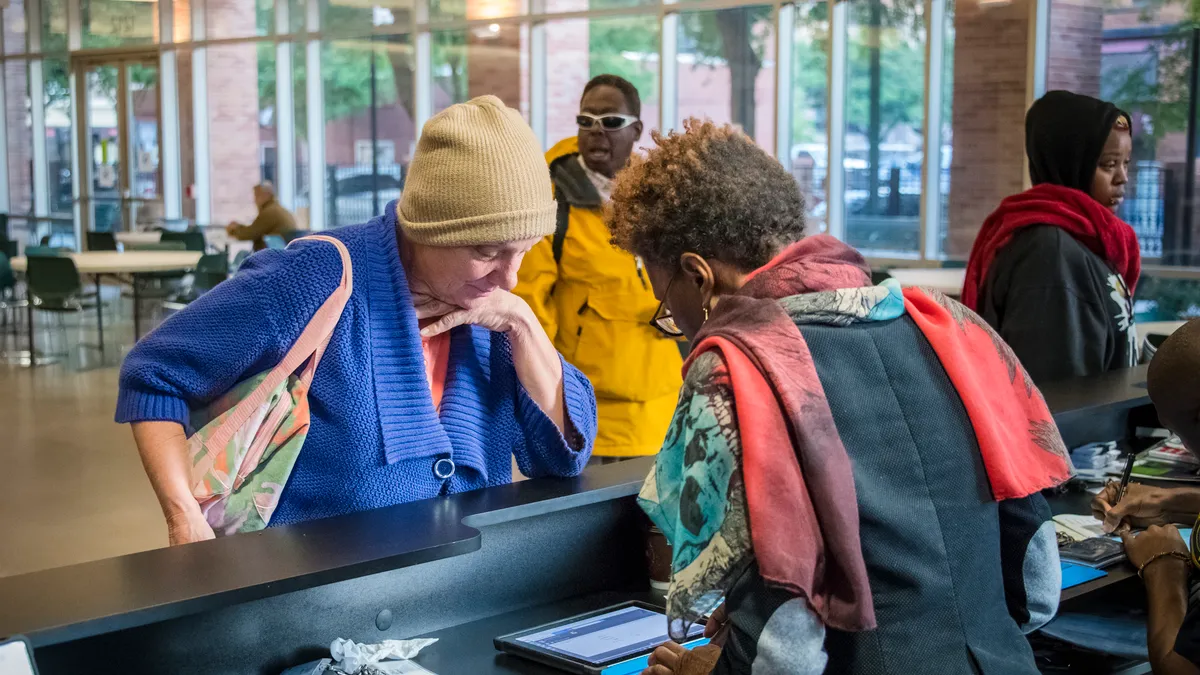Editor’s note: This is the fourth piece in a series on the factors that have led to the success of Houston’s homeless response system and the challenges the city faces and will continue to face in addressing homelessness.
In Houston, there’s only so much money available for serving individuals who are homeless. Leaders of the region’s continuum of care, The Way Home, must be selective about which organization receives money and for what purpose.
With federal, state and county funding, the system had over $60 million at its disposal last year to address homelessness in the region, said Marc Eichenbaum, a special assistant to Houston’s mayor for homeless initiatives. The city does not allocate general funds to address the issue, only federal grants. In total, the Houston region spends the least on homelessness compared with “virtually any other major city in America,” he said.
“With such a limited amount of public resources, we’re going to invest it wherever the data shows that we get the biggest rate of return,” Eichenbaum said. He is a member of the steering committee that sets the continuum’s goals and strategies and works with the city and counties on determining how to use and leverage various funding sources.
“Often, agencies will come to us with amazing ideas,” Eichenbaum said. “But at the end of the day, our response is, ‘Show us the data.’ And we’re going to let that data guide us onto what we’re going to be investing [in] and championing.”
This data-driven approach has helped the city implement a housing-first strategy that has reduced homelessness in the region by 63% since 2011.
All homelessness systems that receive federal funding must consistently enter client-level data into centralized management systems that allow analysis and reporting of system performance, said Ann Oliva, CEO of the National Alliance to End Homelessness.
Washington, D.C.; Portland and Mulnomah County, Oregon; and King County, Washington are among the communities that use homelessness data similar to the way Houston has, Oliva said in an email.
Still, it is “very uncommon” for cities to utilize Houston’s level of data integration, “where decision-makers can see families interacting with multiple systems,” said Alisa Hartwell, data and research analyst at New York University’s Housing Solutions Lab.
Oliva said that highly data-driven systems have “rich” understandings of who experiences homelessness and what resources are available to them.
“Data makes systems more efficient,” Oliva said. “It identifies outcomes for programs — both positive and negative — and helps communities identify gaps in services and resources that might not otherwise be obvious.”
How the data is collected
Every time a person engages with Houston’s homeless system — when they receive homeless-dedicated health care, walk into a local soup kitchen, seek shelter or engage with an outreach coordinator — service providers enter data into its Homeless Management Information System. “They are basically getting clocked in,” Eichenbaum said. All agencies can view a lot of that system-level data through a single dashboard, he said.
Typically, more than 21,000 individuals interact with Houston’s homeless system every year, said Eichenbaum. Many of those people aren’t homeless but utilize the system and engage with different partners to meet their basic needs. The Coalition for the Homeless, the organization that manages the continuum, refines the data to identify those who are actually experiencing homelessness, he said.
Houston officials also gather data during the annual point-in-time count, when jurisdictions throughout the country hit the streets and tally each person experiencing homelessness on a single night in January. Houston received a waiver from the U.S. Department of Housing and Urban Development to spend three days on its count so the city can capture everyone, including those living in wooded areas and bayous, he said.
Enumerators ask the individuals they count a list of survey questions that provide even more data, including how long they have been homeless, their veteran status, and whether they have substance abuse issues or are victims of domestic violence.
Data entry and evaluation by the communities tracking such homelessness information need to be consistent and completed to a high standard so that they have the information that they need, said Oliva. The continuums of care that operate Homeless Management Information Systems have relationships with city staff that can vary from community to community, she added. So while these data systems are not rare, the sharing and analysis of data “often depends on the level of collaboration and coordination between the two sectors,” Oliva said.

Acting on the data
The data allows continuum and local government leaders to look at trends to see if their broader housing-first strategy is working, Eichenbaum said, by examining whether there is a relationship between the number of individuals placed into housing and a reduction of the region’s overall homeless population.
The real-time data also allows city officials to determine where the most people who are homeless are living or are moving to and what their biggest needs are, he said. That information helps them determine where to deploy money and resources to provide those services or launch new programs.
The data helps leaders make difficult decisions on programs serving the homeless population that are popular and fully utilized but not having an impact, he said. When evaluating providers, continuum leaders always ask the same questions: Are the programs housing more people? Are they reducing homelessness? Can they be brought to scale? If not, they will stop investing in the program.
The continuum decided, for example, not to invest in some transitional housing programs, partly because officials found that people living in time-limited housing often returned to homelessness at higher rates than those who received permanent housing with wrap-around services, Eichenbaum said.
“We can build things that get 100% used, but at the end of the day, if it is not having an impact, it’s not worthy of our limited financial resources,” Eichenbaum said. “We solely focus on what’s impactful because that’s our guiding North Star.”
That required a culture shift, he said. Instead of a soup kitchen celebrating that it served 500 more meals to people than it did the year prior, it should be celebrating when it served 500 less meals in a year, for example. “That means there’s less need, he said.
Organizations serving the homeless population in greater Houston can still tap into other sources of support, mostly private funds, whether or not they participate in the continuum. Some organizations in the region are not part of The Way Home continuum and do not receive money from it but still exist through private funding, Eichenbaum said. However, “they are few and far between,” he said.
Many organizations that are part of The Way Home also receive little or no funding through the continuum and mainly rely on private funds, said Catherine Villarreal, director of communications at the Coalition for the Homeless.
Sometimes the data allows the continuum to make the lives of homeless individuals a little bit better, Eichenbaum said. Continuum leaders can see, for instance, that people are leaving a specific shelter early in the morning, getting on public transportation and traveling five miles down the road to get a cup of coffee at a place that serves breakfast, he said. Instead of forcing people to travel that far for a cup of coffee, they could locate a breakfast provider within the system that’s closer to the shelter.
The system also alerts leaders when a housing unit is available so they can match it up with a person needing permanent supportive housing, Eichenbaum said. When that person checks into a soup kitchen or interacts with the system, staff can tell them to contact their case manager to get placed in the home.
The continuum’s leaders also can see which people housed through its efforts are still engaging with various services. If needed, they can contact case managers to check on the individuals to see how they’re doing and what they need. That helps prevent people from becoming homeless again. Eichenbaum said.
Benefits and costs
Houston’s housing-first model wouldn’t be possible without using high-level data to drive decisions, said Sara Martinez, vice president of communications and development at the Coalition for the Homeless.
Data-driven decisions allow the continuum to use public and private funding and federal housing vouchers as efficiently as possible to help produce successful outcomes for clients, she said. “We no longer make decisions based on anecdotes,” said Martinez. “Our access to real-time data allows us to make strategic decisions based on real people and real needs.”
The Coalition for the Homeless is also able to “look at the characteristics of people experiencing homelessness across our whole community to understand their needs and identify any gaps or shortages in programming,” said Martinez.
While the system is “still a work in progress,” the continuum has continued to build on the collected data, said Thao Costis, president and CEO of SEARCH Homeless Services, a Houston-based agency that is a member of The Way Home system. It has provided “more consistency … for the entire homeless service system and clients who intersect,” Costis said in an email.
Oliva said that Homeless Management Information System operators often face challenges with the collection, analysis and use of data. It requires dedicated funding and personnel to maintain quality, privacy and security. There are a number of technical components that city governments need to prioritize.
Transparency is another factor. Many effective systems led by continuums, cities and counties have built publicly available dashboards that provide information to community stakeholders, giving transparency and accountability, Oliva said.
“The collection and use of personal data about people experiencing homelessness requires trust between the government and service providers and people whose data is in the system,” Oliva said. Misuse of data by any entity will likely result in a decline in data quality and usefulness since people and organizations may “refuse to provide information because the system is perceived as untrustworthy,” she said.
For case management, Hartwell said, it can be “incredibly useful” to have detailed information about clients. But evaluating the effectiveness of a single program is difficult if multiple services are so fully integrated, she said. Still, when a city can effectively track the enormous costs of homelessness and shelter stays, “developing long-term affordable housing seems less exorbitant by comparison,” she said.




















